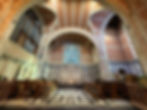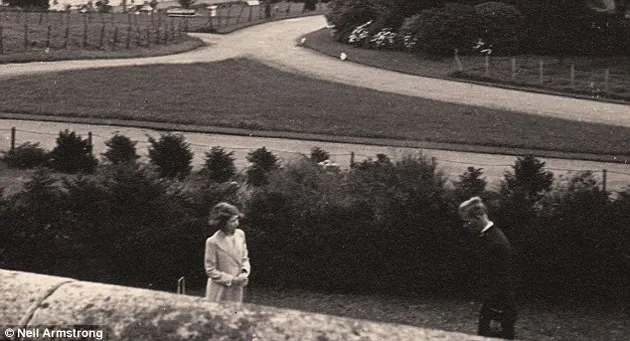Visiting the Britannia Royal Naval College in Dartmouth
- Sarah
- Jun 28, 2025
- 7 min read
Updated: Aug 23, 2025
The Britannia Royal Naval College sits high on a hill overlooking the beautiful coastal town of Dartmouth in Devon, and since 1905 it has been home to naval cadets who undergo many weeks of rigorous officer training within its grounds. The Britannia Association offers guided tours to the public, providing a unique insight to the life of the students as well as the interiors of the Neo Byzantine Palladian building. It also played a significant role in the British royal family tree, as it was here that a young Princess Elizabeth met her future husband.

The Britannia Royal Naval College was established in Dartmouth in 1863. Previously, the training ship which had been in use, the wooden HMS Britannia based in Portland, was moved to Dartmouth as it was an inlet sheltered from the storms and winds which often ravaged the Dorset Coast. Soon joined by the HMS Hindostan, the college outgrew both ships, and a land based location was sought. Using compulsory purchase, they acquired a beautiful spot on top of a hill, with the foundation stone laid by Edward VII in 1902. The building was designed by Sir Aston Webb, who designed the main façade of Buckingham Palace, as well as the V&A in London.
Since then, it has become the only naval college in the UK, others having closed down over the years. It is part of the fabric of Dartmouth, and a visit to the college is one of the top attractions for tourists in the area who have the foresight to book ahead.
Tours start at the cast iron bandstand in Royal Avenue Gardens, a leafy spot near the waters edge. Here you meet your tour guide, have your names checked off, photo IDs inspected and lanyards distributed, before getting on to the minibus for a short journey to the college. The bus is waved through the checkpoint by an armed guard, rifle fortunately pointed downwards, and on our visit, there was a buzz of excitement in the minibus when they saw that the terror alert was ‘heightened’, although I suspect that is always the case these days.

The minibus deposits the group opposite the main entrance, at the exact spot where countless recruits are dispatched as they start their training at the college, filled with much trepidation about the months ahead. The replica of Britannia’s mast dominates the area, a steel version of the wooden original, and despite towering over everyone, it is still 40 foot shorter than the original. In the past, 12 year old cadets had to scale the wooden mast at least once during their training, a terrifying thought when you imagine that there was also an additional 50 foot of boot to drop past before you hit the water if you should slip.
The façade of the college is an imposing one. Finished by 1905 with sweeping views over Dartmouth, Kingswear on the other side of the water and the River Dart making its way out to sea, it is a stunning view and one that must surely impress the inhabitants of the college every day. The driveway has the requisite cannons as ornamentation and even a large bombshell, donated courtesy of the Luftwaffe.
On one side of the building is an immaculate lawn, part of the Captain's house, and the place where history was made, for it was on this lawn that a young Princess Elizabeth met a handsome naval cadet who she was immediately besotted with, blushing profusely as introductions were made. The lawn now has a tree with a small plaque presented by King Charles III, in recognition of the role it played in his parents meeting.
The tour starts in the chapel. It is one of 5 chapels in the college, and is an ecumenical space for more than just Anglicism. With Italian marble, Portland stone exterior and and Bath stone interior it is a serene open space, with sobering plaques on the walls in memory of former cadets who died in service.

One particular feature of the chapel is a tiny window right at the top, barely noticeable. Admiral Nelson was shot during the Battle of Trafalgar on October 21st and every year, the light from this small window moves in an arc until it illuminates the central figure over the altar, that of Jesus, at 4.15pm, the exact time Nelson died.

There is also a memorial to Captain Scott, leader of the ill-fated Antarctic expedition who was once a cadet at the college. A particularly lovely feature is the altar cloth, which was made from Queen Victoria’s wedding dress. A slightly timeworn embellished cream cloth, its presence in the college highlights the enduring personal link between the navy and the royal family. Other features include a model of the 17th century HMC Britannia suspended from the ceiling and a mezzanine floor colloquially called the 'hen coop', as this was where female visitors would attend the chapel.
The tour takes you through the main corridor which runs the length of the building at 1/8th of a mile. Cadets over the years have raced the length of this corridor to set the college record, which is currently held by a certain Charles Windsor, who allegedly managed to complete the corridor in 6 seconds in 1971 – on a motorbike. Apparently he got quite a scolding from the Captain's wife.

A highlight of the tour is the museum, a large room packed with significant naval artefacts. A particular favourite was one of the white wooden trunks which cadets would bring to the college with their entire lives packed up in them.
A section of the mast from HMS Invincible, which sunk two German cruisers in the Falklands in 1914 is on display, a huge hole showing just how much damage it withstood. There are objects made from the wood of the original HMS Britannia as well items retrieved from the bottom of the river that exuberant cadets had tossed overboard. As you would expect, there are medals and some poignant stories of the loss of young men in action.
At one end of the corridor is the wood-panelled dining room. Three large wooden steps lead up to it, each one decorated with an engraved square, to represent the three square meals a day that cadets are fed during their time there. Rows of wooden tables wait for the cadets, each chair placed at exactly the same angle and distance from the table. Around the walls are portraits of assorted famous mariners, along with inscribed dates of famous sea battles. A colourful ceiling decorated with emblems such as the three roses of England, three thistles of Scotland and the three shamrocks of Ireland, although there is nothing representing Wales, as it was a mere principality at the time the ceiling was created.
Cadet Charles Windsor took exception to this, for obvious reasons, and commissioned a silver statue of Britannia, with a three feather headdress, which he gave to the college with strict instructions that it was to be placed in the dining room whenever important banquets and events were held there, so that Wales would be represented. The statue currently lives in a display case outside the dining room where it can be admired by all passing students.

Other artefacts in the dining room include a ships wheel from the vessel Aurora, a Copenhagen plate given to Lord Nelson to celebrate his victory at Trafalgar, along with an oval venison dish given to Hardy by Nelson. What our tour group was far more interested in however was the yelling that came from the depths of the kitchen, followed by a sobbing employee walking out using her apron to dry her tears. We were all hustled out quickly before we could watch any more of the unfolding drama.

The tour includes a visit to the parade ground which is at the front of the building, and which used to be a rose garden. It must have been glorious once, with its sweeping views down to the sea seen through a profusion of roses. During our visit, cadets were being put through their paces, marching up and down in formation as very genial looking instructor shouted out orders. This is where cadets pass out on their final day, marching around the parade ground with their families watching from the parapet above. We were told that they need to get used to marching in front of people in preparation for passing out, and to look as scary as we could as they marched pass. None of us managed it, but it was very exciting to have a phalanx of cadets saluting us as they marched past.
The tour ends at the Quarter deck, originally known as the Great Hall. This is the main assembly hall of the college, and was where cadets learnt to march before the construction of the parade ground. At one end sits a life size statue of George V, and around three walls is the poop deck, with bulging iron balustrades to hold ladies voluminous dresses. This was where the decorative donation from the Luftwaffe arrived.

Prior to the war in a time of cordial military exchanges, some German officers had attended the naval college, and knew that every second Friday at 11am, the captain of the college would address staff and cadets in the Quarter deck. The Luftwaffe timed their bomb drop precisely, but were sadly unaware that the usual meeting had been postponed. Unfortunately one poor WREN in the ladies took a direct hit and there was damage to the roof, but otherwise the cadets escaped unscathed.

After that, cadets were sent to Cheshire for training, and the Americans borrowed the building for planning D-Day. The Luftwaffe tried again, but the bomb didn't explode, although the George V statue did lose a corner of his greatcoat which is still missing today. This is the bomb which now decorates the front of the building.
The tour ends near the most beautiful magnolia tree imaginable if its in season, a vibrant pink set against the backdrop of vivid blue sky and distant hills, before its back on the minibus and a short return journey to the park. It is most definitely worth doing, a fascinating and educational visit to an historic and very British institution.
Visiting the Britannia Royal Naval College
Tours are run by the Britannia Association and can be booked on their website at https://britanniaassociation.org.uk/britannia_guided_tours/
They are every Monday and Wednesday at 10am, except in the winter months and cost £20.
Make sure you take photo ID or you will not be allowed in.
You are allowed to take photos of the places you visit on your tour, but not of peoples faces.



